Art is everywhere in Warsaw - from large murals splayed across side street buildings, to massive classical structures that house modern creations and the classics. Art is in the tons of little shops around the Polish capital that sell locally made paintings, and in the neon signs that adorn restaurants, bars, and even museums. But it's especially entrenched in the city's history.
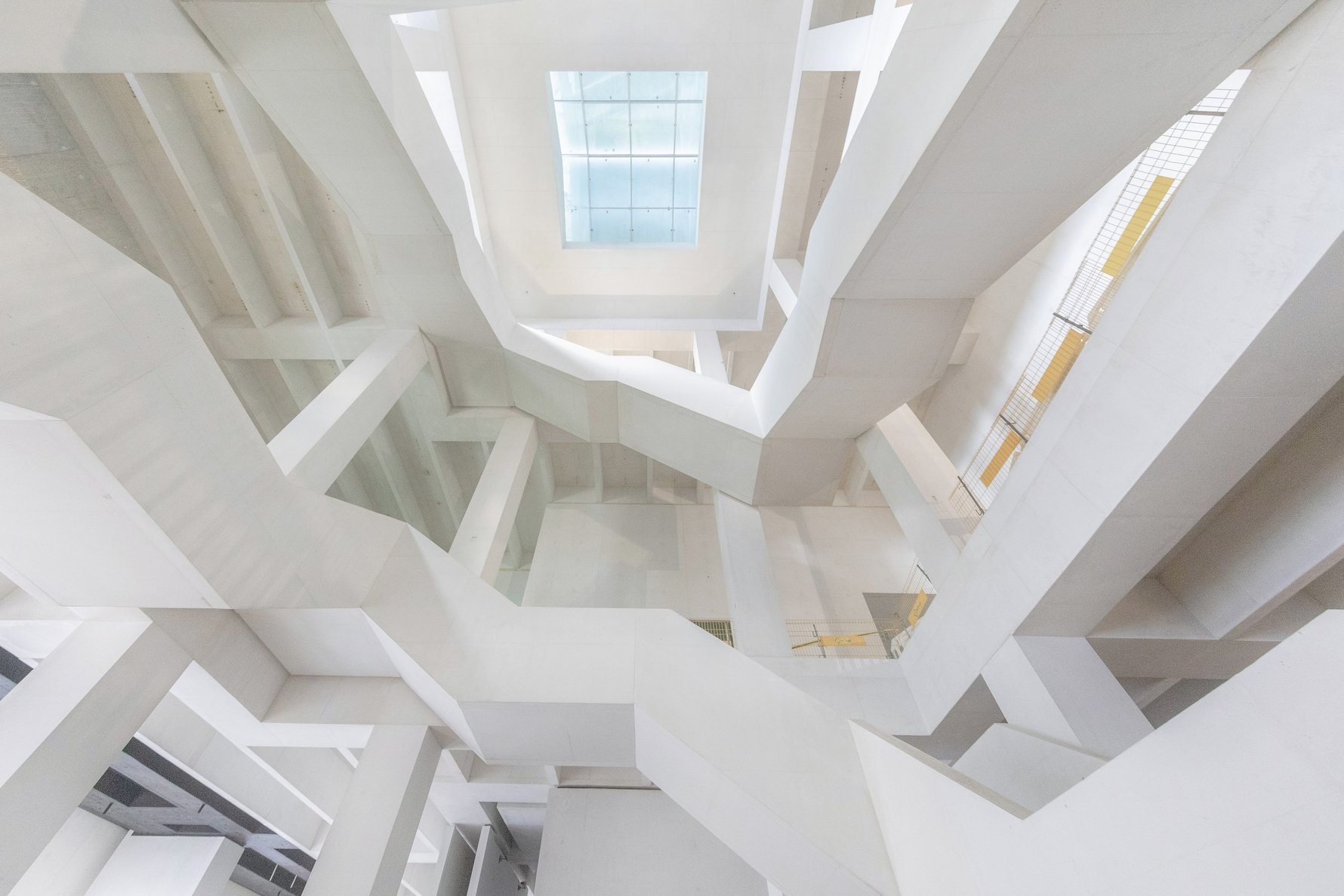
Warsaw has long been home to scores of artists, thanks in large part to the Academy of Fine Arts, which has turned out hundreds of accomplished and prolific artists in its last 200 years of existence. Despite that, Warsaw isn't generally sought out by art enthusiasts, many of whom first think Paris, London and New York when deciding where to go for their museum-ventures.
But that's a mistake. The history of art in Warsaw is long and fascinating, as are its artists. And this season, as the weather gets chillier and the leaves start falling from the trees, it's the perfect time to throw on a scarf, grab your sketchpad, and seek out Warszawian art.
Not only because of the weather (and how nice museums are when it's a touch chilly outside) but also because there are great things happening in the art world of Warsaw right now. First, the new main site of the Museum of Modern Art in Warsaw is opening October 25, 2024 right smack-dab in the center of the city. The glistening white space will house tons of excellent, contemporary exhibits, featuring artists from Poland and the rest of the world. Second, is the Warsaw Art Fair, which is in its 21st year of featuring contemporary and older art from over 100 galleries.
So we've decided to feature some of our favorite artists from -- or with a deep connection to -- Warsaw. Since there are literally hundreds to choose from, this is a small sampling and generally a starting point to explore further. Go forth and immerse yourself in art!
Magdalena Abakanowicz
Let’s start with one of Poland’s most beloved artists, Magdalena Abakanowicz, who is known for her sculpture and textile art in the mid to late 20th century. Born in 1930 in Falenty (just south of Warsaw), Abakanowicz’s family was actually descended from Polish royalty. Her life changed when she was just 9 years old and Nazis invaded Poland and her family became part of the heroic Polish Resistence. Abakanowicz (at the tender age of 14) became a nurse’s aid in a hospital in Warsaw, seeing firsthand the horrors of war. Unsurprisingly, this had a huge impact on the teenager and heavily influenced her art.Years later, Abakanowicz enrolled in the Academy of Fine Arts in Warsaw and, like many other artists at the time, ran up against resistence and constraints by the government. At that point (the ‘50s) Poland was under Soviet rule and leaders banned all art that wasn’t socialist realism (essentially very dark, very realistic paintings of leaders in power). This put enormous constraints on a young Abakanowicz who turned from painting to, more frequently, textiles for artistic expression. She continued to paint but over the years also took up weaving as an art form and later, in the 1960s, produced her famous Abkans. The 3D fiber works hang up to 13 feet from the ceiling and are made of a weaving technique Abakanowicz herself created (See one for yourself at the Modern Art Museum of Warsaw from late October 2024 onwards). Fun fact: they also inspired a 2023 fashion line by Alexander McQueen.
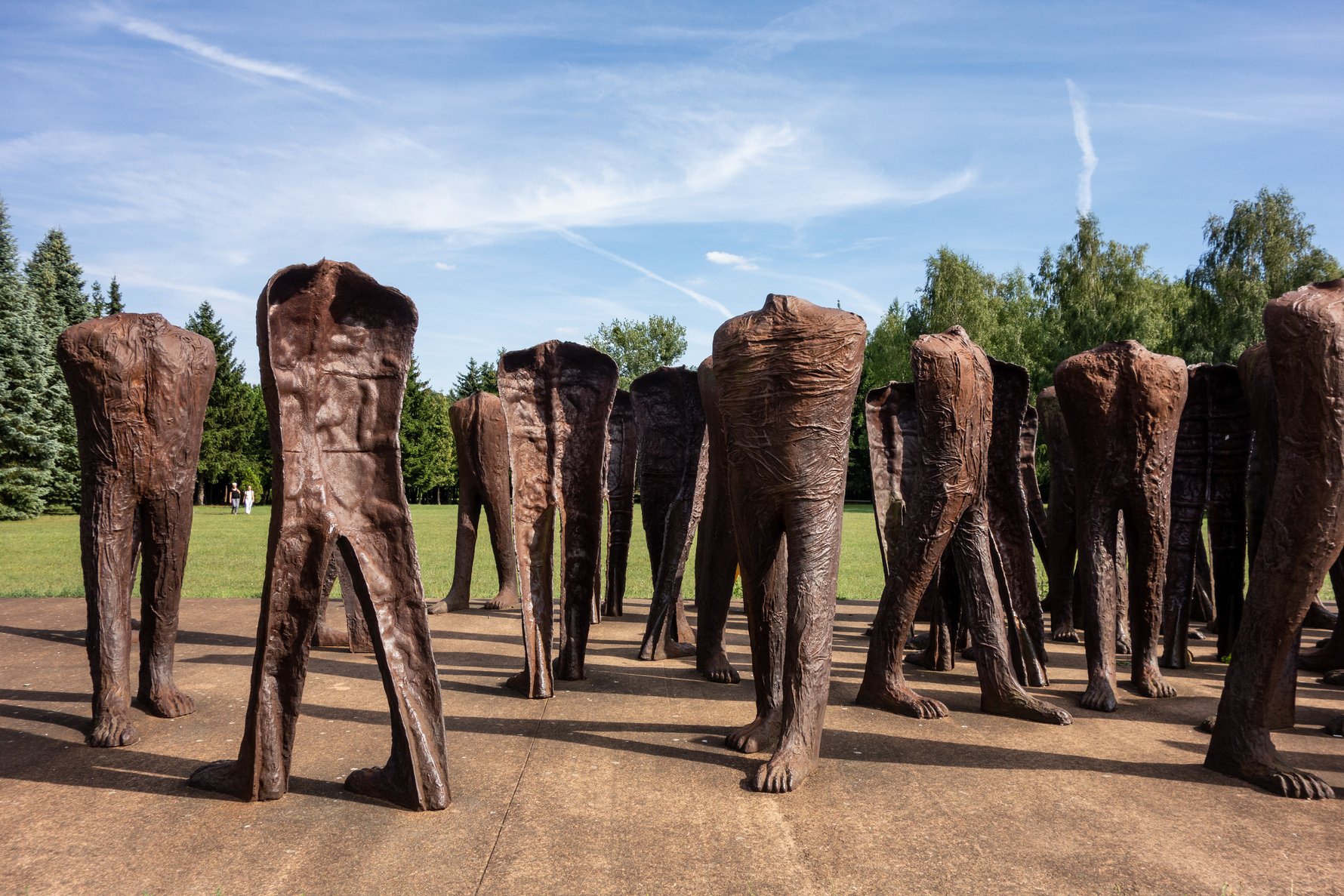
Later, in the 60s and 70s, she moved on to sculpture art, creating figures out of synthetic resin. She played a lot with the human form, creating series of sculptures depicting headless bodies, others depicting only heads, and still more of human backs. As the decades wore on and her international renown grew, Abakanowicz created other sculptures out of bronze, wood, stone and clay. Her works can be found all over the world, at places like the Tate Modern and Moma, and one piece was even in Robin William’s private collection. Abakanowicz died in 2017 in Warsaw but her works live on as a respresentation of the extreme oppression she and other Poles faced in the 20th century, and the weight of human suffering.
Zdzisław Beksiński
One of Poland’s most famed artists, Zdzisław Beksiński was not actually born in Warsaw – he was born in southern Poland – but he has a strong, and dark, tie to the capital city. Born in 1929, Beksiński studied architecture in Kraków and went on to work in construction but left it for his real love: art. Specifically, photography, painting and sculpting, the latter of which he created (at first) out of materials from his construction sites.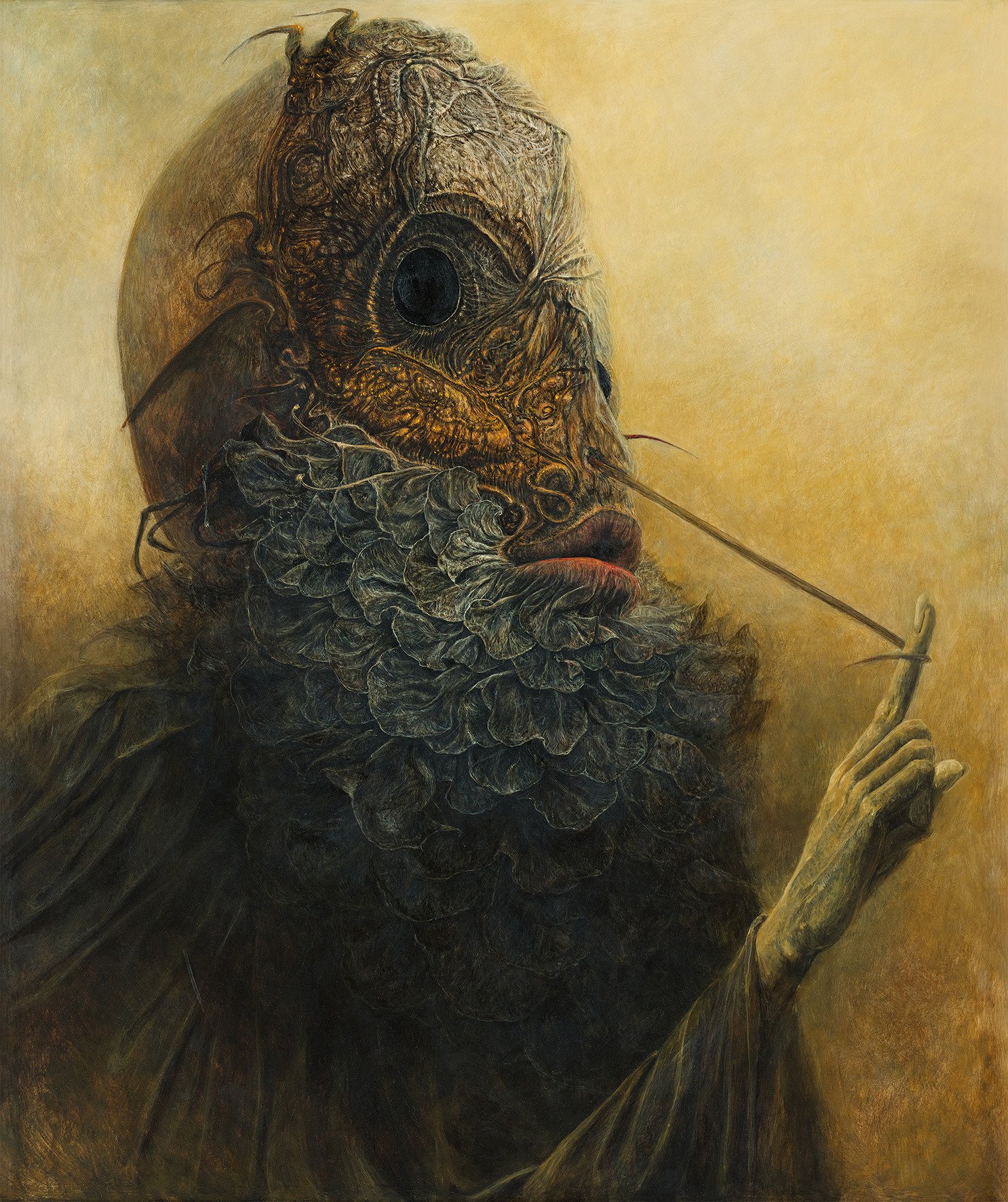
Beksiński quickly fell in love with surrealism and, without any formal training as an artist, he went on to make some of the most beautiful and dark surrealist paintings, often depicting things like people with bandages over their faces and other images of torn or damaged faces. The first exhibition of his work was held in 1964 in Warsaw and launched him into further success as he entered what he referred to as his “fantastic period”. The period produced an enormous amount of dark, surrealist paintings, depicting death, deserts and overall, gloom, which he created in his studio as he listened to classical music. He moved to Warsaw in 1977, destroying a group of his works in the process and leaving no documentation.
In Warsaw, he continued to work on his art, with digital photography and photo manipulation becoming a passion of his during the 1990s. He was known – despite the darkness of his works – to be a generally happy person and a modest one at that, often deciding not to attend his own exhibitions. He was found murdered in his Warsaw apartment in 2005 with 17 stab wounds by a man who was upset that Beksiński hadn’t loaned him $100.
Wojciech Fangor
Wojciech Fangor has been heralded as one of the most distinctive painters to emerge from post-war Poland, and it’s easy to see why. Born in 1922 in Warsaw to a wealthy family, Fangor started early as a creative, encouraged by his mother, a trained pianist. In 1936 he studied under a painter in Poland and traveled around Italy and Paris, pursuing his art. During Nazi occupation, he trained under another renowned Polish artist, Felicjan Kowarski, at his own family’s estate before going on to get his degree from the Academy of Fine Arts in Warsaw in 1946.During Soviet rule, Fangor worked on government projects to support himself and, following the doctrine that mandated all art be Socialist Realism (see above) Fangor worked on Socialist Realist pieces including one (Figures) that’s one of his most famous works. However, his period of Socialist Realism didn’t last long; by 1952 he had become dissillusioned with the style and turned instead to graphic design, eventually co-founding the Polish School of Posters. In the 60s he transitioned to more abstract art forms, using blurred, geometric images to produce artistic experiments that played with color, light and space.
These works began to garner international acclaim largely for their optical effects and hyper contemporary nature. He was commissed to create art for the train platforms at the Warszawa Srodmiescie station (you can see them today – abstract blots of color lining the inside of the train platform walls). He eventually moved to Vienna and Paris and was highly influenced by contemporary Mark Rothko as he went on to continue creating abstract works that involves large swaths of color and optical illusions.
He settled in the US (and had an individual exhibition at the Guggenheim) for 30 years before returning to Poland in 1999, something that art critics said diminished his worldwide renown. But he continued to exhibit art in his home country and design works for Warsaw’s new metro system. He died in 2015 after living the remaining years of his life in a town just outside Warsaw.
Krzysztof Wodiczko
Another fascinating – and unique for this list, still living – figure is Krzysztof Wodiczko, a Polish artist known for his slide and video projections which he projects onto architectural facades and monuments. Born in 1943 in Warsaw during the Warsaw Ghetto Uprising, Wodiczko studied (unsurprisingly, given all the names and their alma maters on this list) at the Academy of Fine Arts in Warsaw and began collaborating on studio and sound performances. Over the ensuing years, he developed a style that combined technology in a practice he calls Interrogative Design, with projects like Vehicle, which is a machine that moves in one direction based on how the user walks on it. He tested out several of these projects (most notably, Vehicle) on the streets of Warsaw in the 1970s and continued to spend his time collaborating with other artists on sound and music performances.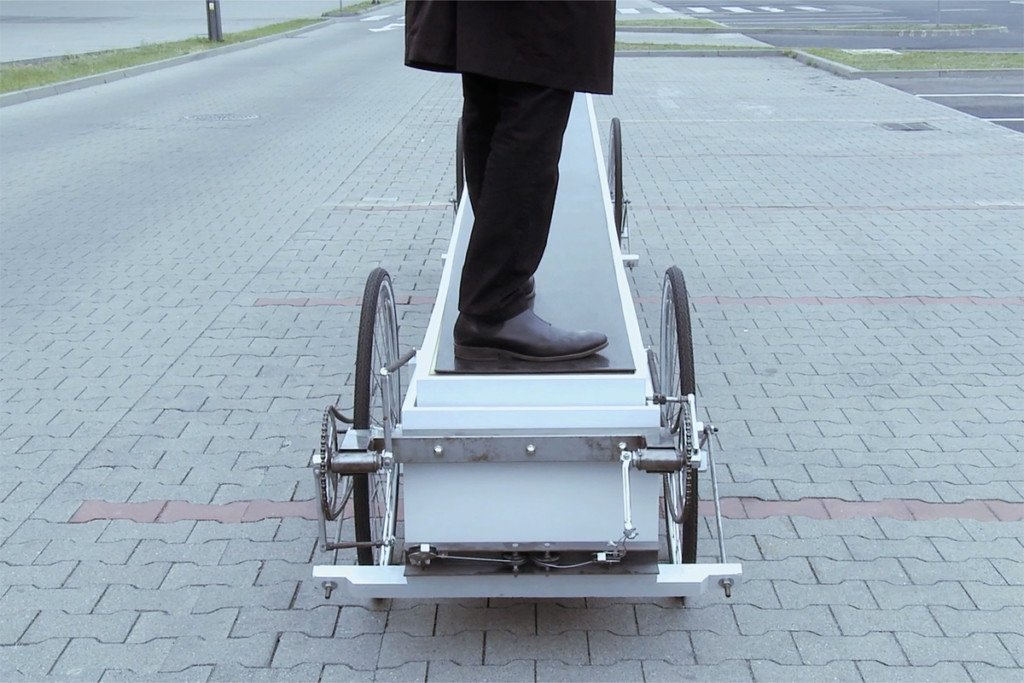
He eventually emigrated from Poland in 1977, first landing in Canada to teach at an arts college there, before moving to New York City and taking up a teaching residence at MIT. His most notable works – his projections – came to life in 1980. In one piece, he projected the head of Ronald Reagan doing the pledge of allegiance onto the AT&T Long Lines building in New York City for several days leading up to the 1984 presidential election. He has other artistic projections in cities around the world, including those in Germany, Ireland, Israel, Japan and many others. He has won numerous awards for his art and he’s well worth looking into, as the meaning, significance, and breadth of his work cannot be fully conveyed over text.
Xawery Dunikowski
Though possibly not as well known as the others on this list, Xawery Dunikowski was nonetheless a fascinating figure, artist, Holocaust survivor (and alleged murderer, but more on that in a bit). Born in 1875 in Kraków, Dunikowski’s family moved to Warsaw when he was 12 years old. He studied at the School of Fine Arts in Kraków before returning to Warsaw to teach sculpture at the Academy of Fine Arts there in 1902. Three years later, during a fight at a restuaurant in Warsaw, he is said to have shot and killed a fellow artist, however he was never tried because of an ongoing major conflict – the First Russian Revolution in 1905.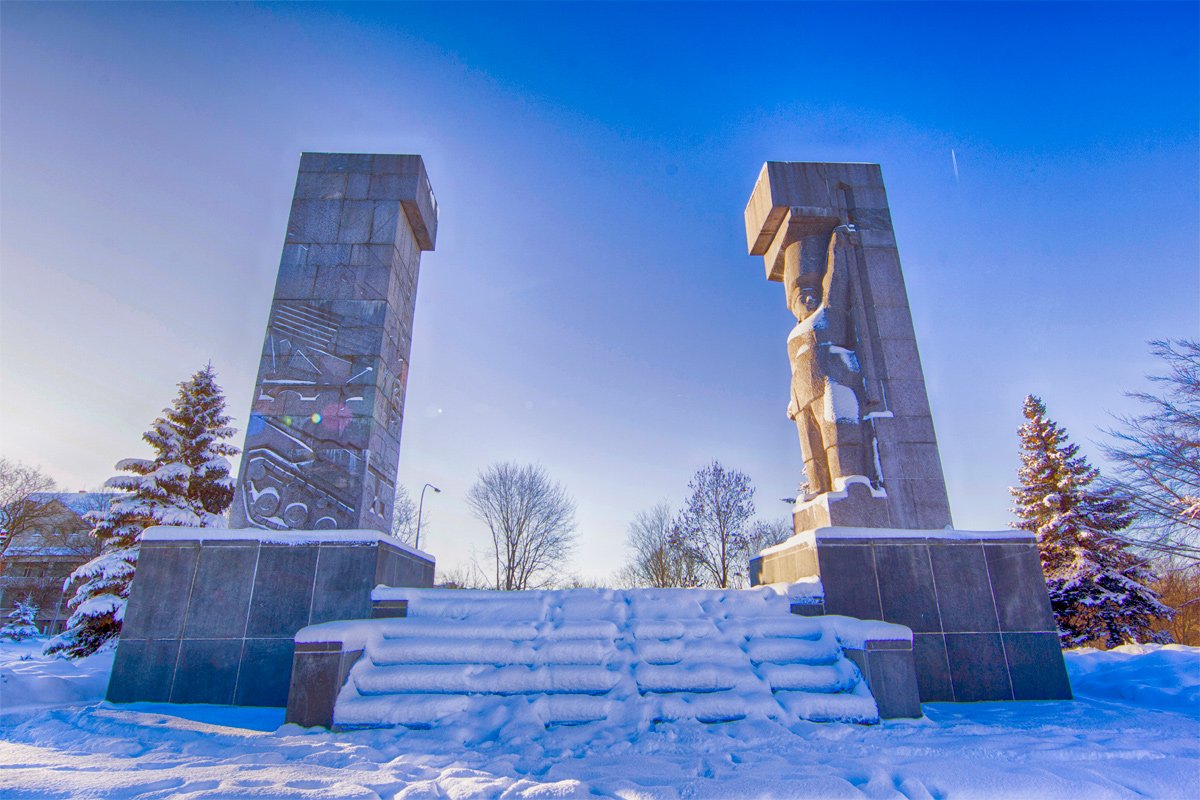
He continued to teach in Paris and then in Kraków until 1940 when he was arrested by the Nazis and taken to Auschwitz. He narrowly escaped death by the gas chambers when a fellow Pole crossed his name off the list of people to be killed, and again escaped when he was scheduled to be shot over accusations he was part of a resistence movement. Due to an illness he had at the time, he was sent back to an infirmary. In 1944 while in the hospital, he started drawing images of his fellow prisoners, which were smuggled out and sent back to Kraków. He was alive, though sick, when the camp was liberated in 1945 and he returned to his art – specifically, a set of sculptures he had started before he was sent to Auschwitz. His art in the following years was largely inspired by the works he had created while he was captured and mostly involved architectural, large-scale pieces like the Monument of the Liberation of the Region of Warmia and Mazury and the Revolutionary Effort. He eventually returned to Warsaw to teach at the art school and died in 1964. Some of his works are on display at Królikarnia, a former palace in the Mokotów neighborhood of Warsaw.
Further Adventures...
Armed with that knowledge, you now have a great understanding of some of the, well, greats! But there's much more to see. For contemporary art, head to Zachęta, which has tons in the way of abstract paintings, sculpture arms coming out of walls, melted crayons, all those pieces that make you think (and some that make you really think). Or head to the new Modern Art Museum for an opening exhibition on feminist art from modern artists around the world (and several from Poland!). If you're into the classics, don't miss the National Museum, which (in addition to an excellent archaeology section) offers floors of classical art and a whole section just on famous Polish artists. Or just check out what museums and other art institutions the Polish capital has to offer!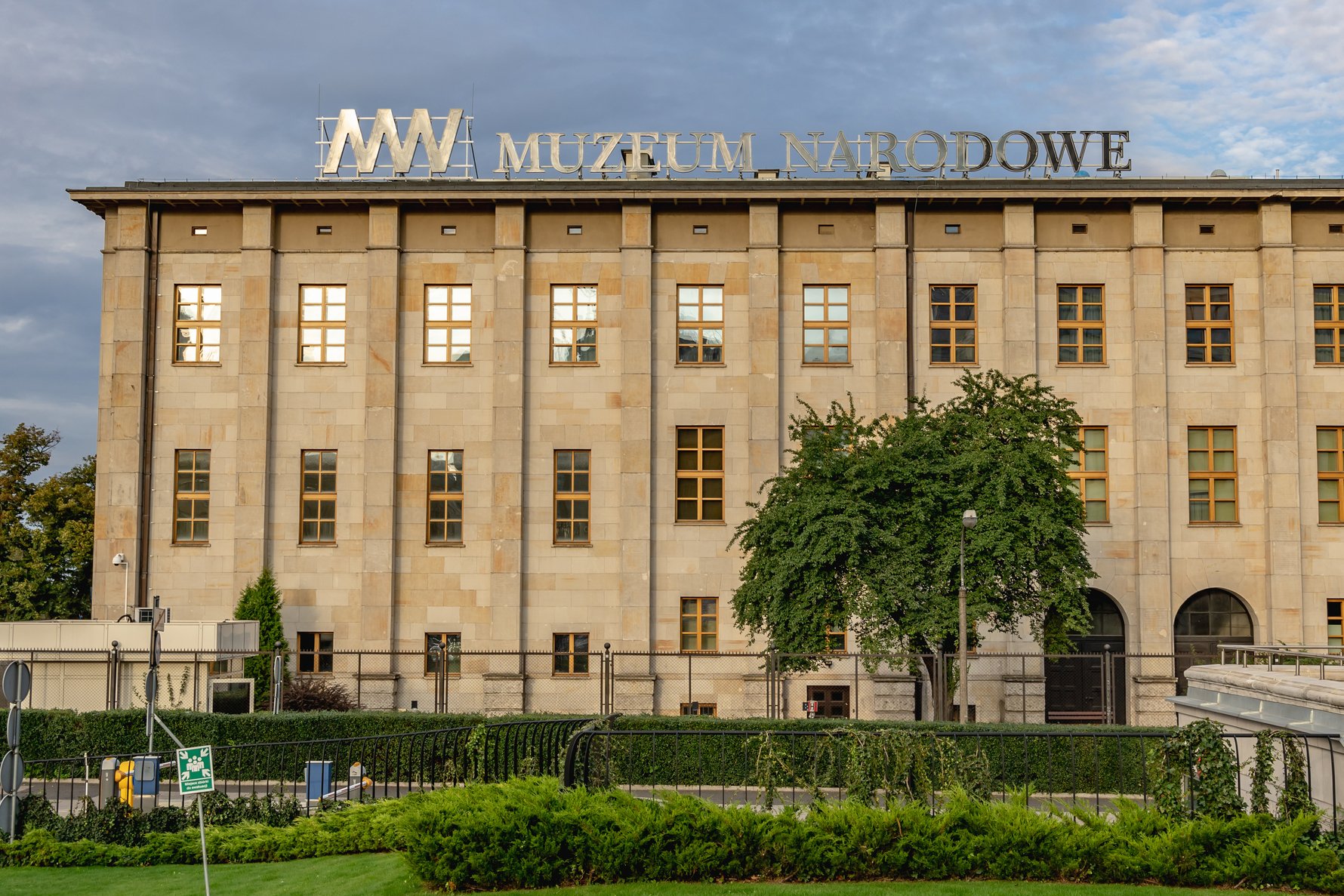



Comments